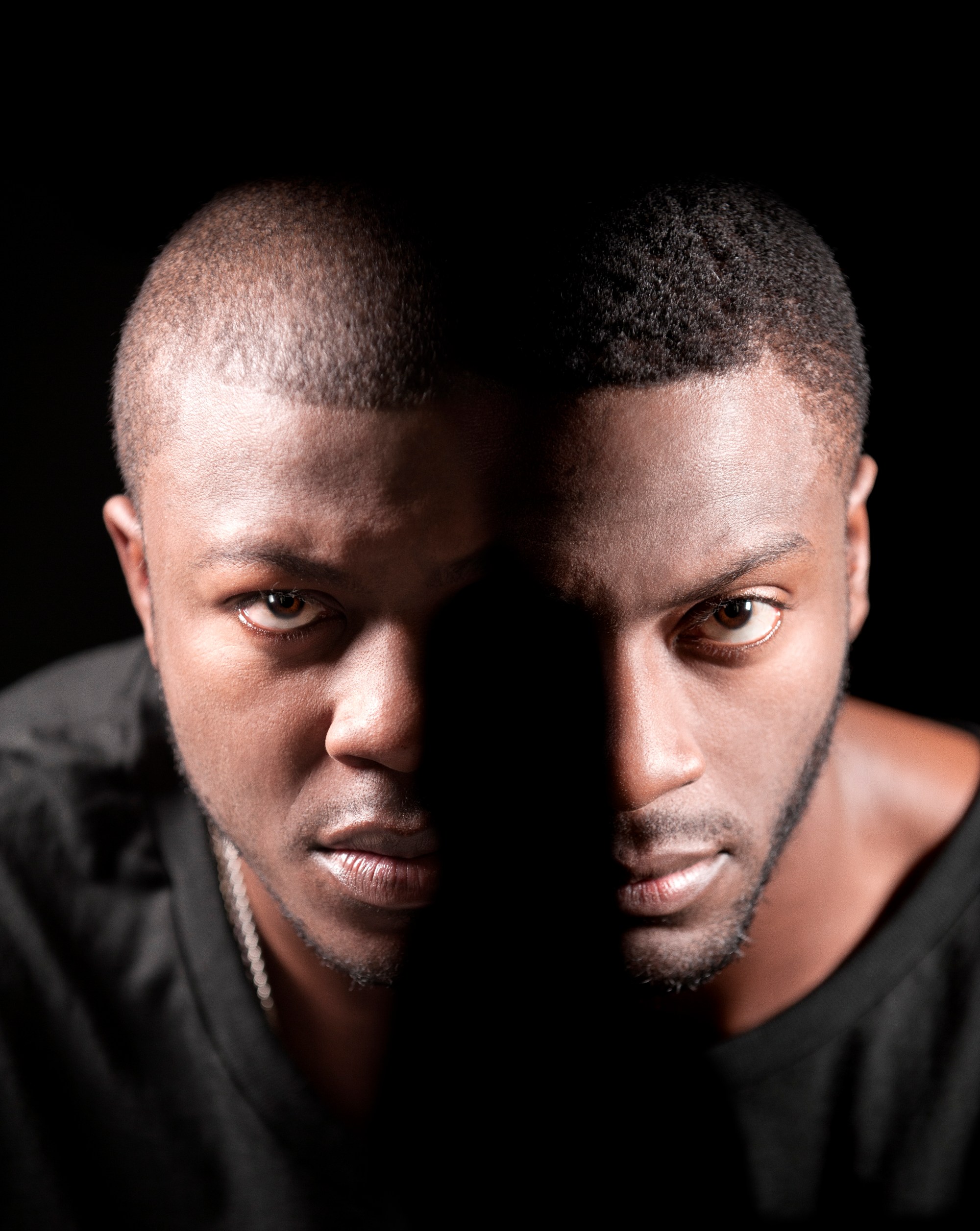
- Industry
Black Hollywood: Carell Augustus creates Beautiful & Provocative Images Reimagining Iconic Movie Moments
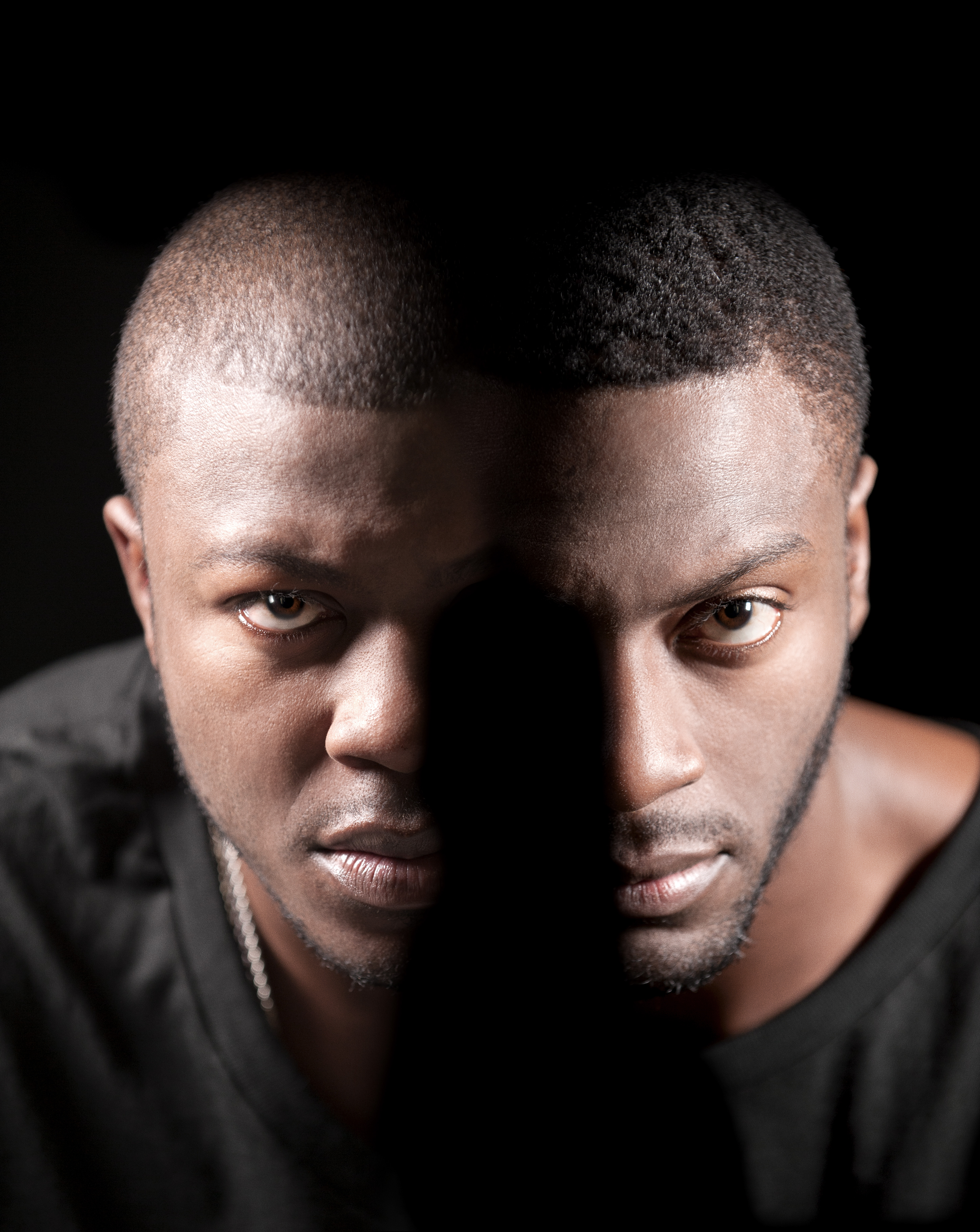
Black Hollywood: Reimagining Iconic Movie Moments, by photographer Carell Augustus, is a work of art – not merely visually, but also for the fact that the images used are of iconic frames from films that are so much part of our social fabric that they are embedded in our psyche; the one change is that the central “star” associated with the look has been replaced by a Black person.

Before the deluge of outrage begins at the idea of reverse appropriation, let’s consider the surface impact. Beautiful photos replicated with the star replaced. Really. No big deal. Vogue does it all the time. Now that we’ve put that flutter to rest, let’s consider why the idea of Caucasian stars being replaced by Black stars – which is what has happened in all of the stunning photos Mr. Augustus has created – might be worthy of exploring.
The obvious reason is that for many of the films referenced, people of color would never have been considered for the pivotal role featured in the photograph at the time when the projects were made.
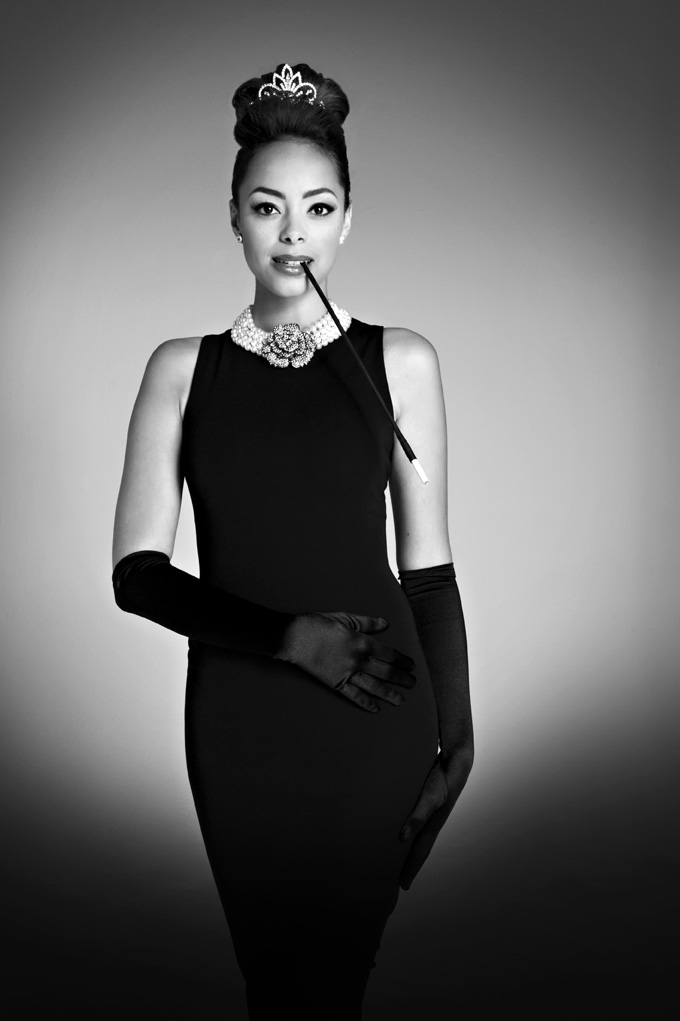
The cover photo is of Amber Stevens West portraying Audrey Hepburn from Breakfast at Tiffany’s – a beautiful photo, a beautiful film – and then you recall that in the film, Holly Golightly’s Asian landlord was portrayed by a Caucasian, Mickey Rooney, subtly underscoring the message of the book.
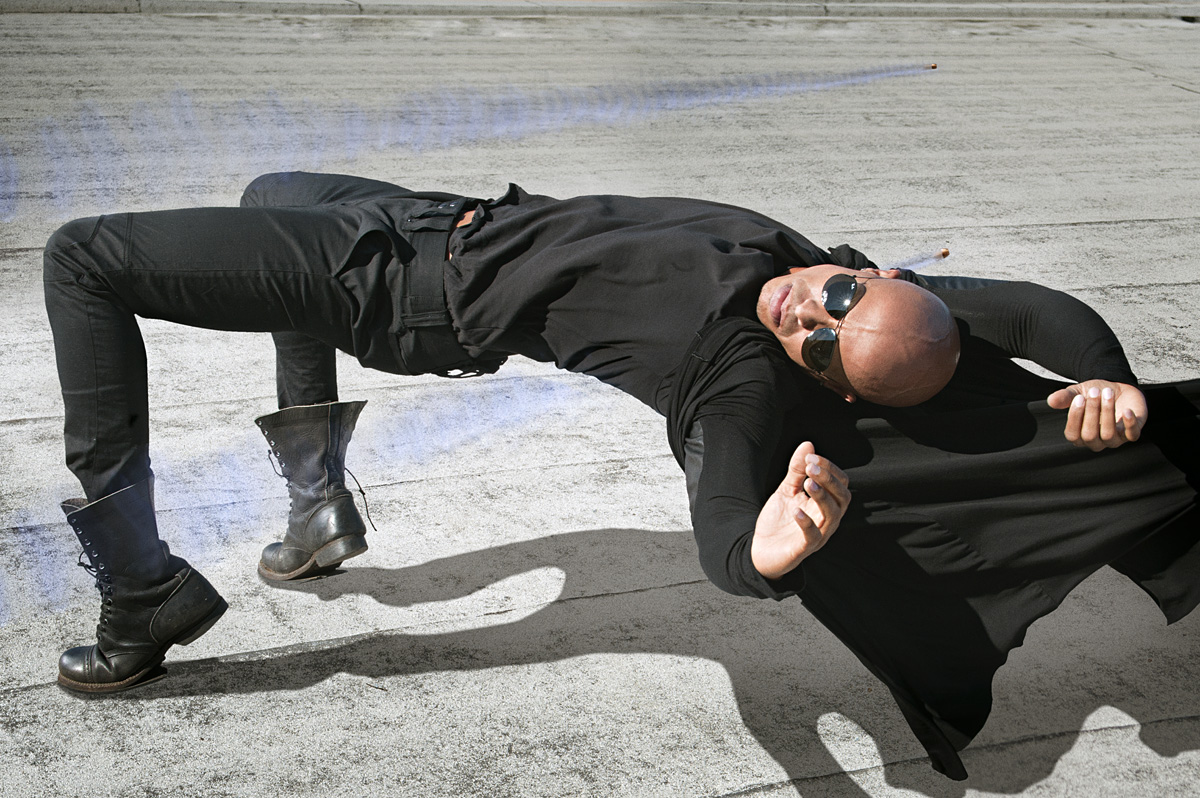
The foreword to the book is by Forest Whitaker, who reflects on the lack of diverse representation in entertainment when he was a youth, and the fact that he originally didn’t “see” himself as an actor because he didn’t feel that he represented what an actor is portrayed as being.
One could bypass that message – that of how social messaging frames how we see ourselves, judge our worth and form our aspirations.
Indeed, for those who discount unconscious bias or the ways in which imagery creates the desire and the expectation of an individual and subsets of society, Carell Augustus shares a poignant – indeed, heartbreaking – story while discussing Black Hollywood via Zoom from New York.
“The first image of a topless Black woman I saw, was in National Geographic, with flies around her, feeding her baby. It wasn’t appealing.” He took on the subconscious message. “It’s something you formulate in your own head – what is beautiful. As a young teen, I deduced I was being shown that image to demonstrate the difference between the depleted Black woman and a perky, pretty blonde girl on Porky’s, and my takeaway was that God was nicer to them because they were the standard.
“As I matured I understood it was about imagery. When I got to LA, photographing Black actresses wasn’t my thing – because people wanted to see Katie Holmes and Cameron Diaz in the early 2000s. That’s what sold. I thought if I wanted to be successful that’s what I needed to focus on.
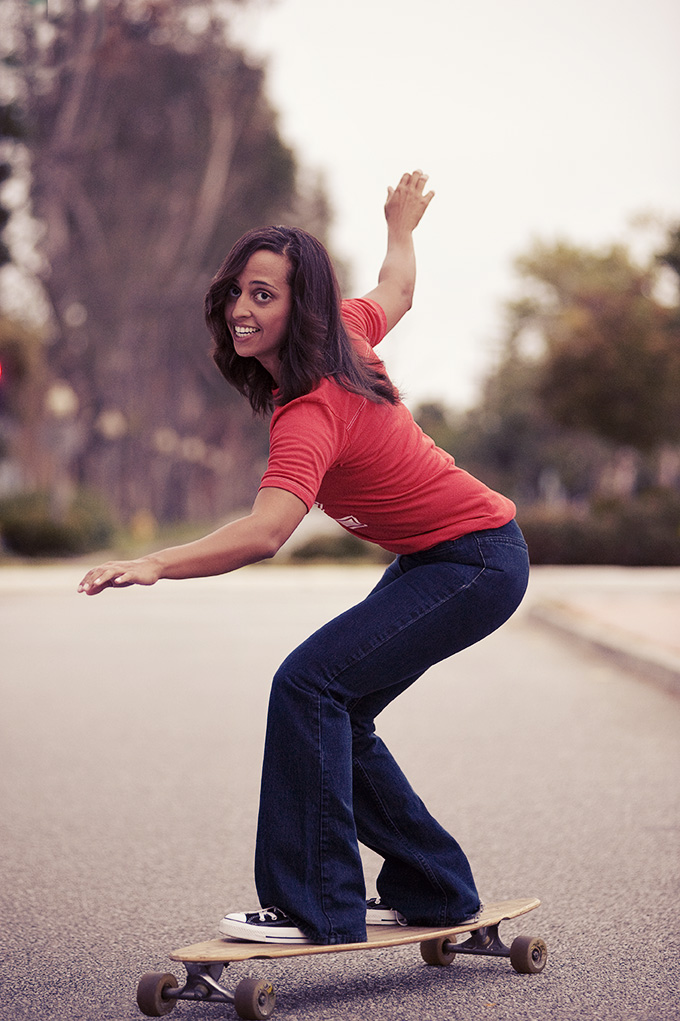
“This book has been a rewiring across the masses. If you doubt my take-away, look at the magazine covers at that time?” He refers to the monotonous reflection of Caucasian perfection that was prevalent then.
The first page of his book carries a caveat: This is not just a book for Black people. It’s a book for all people about Black people.
Augustus explains, “When people found out about the book, some said, ‘What if I did a book and called it: The White Hollywood Project?’ Because it’s Black art, it has to have a caveat. People are going to be willfully ignorant about it or pretend like they are, and are going to want to start a debate. It’s just art, but sometimes when it’s a Black focus or we take dearly beloved images and they are recast with Black entertainers, it may make some people uncomfortable. I understand that is going to happen, but it’s not meant to happen.”
“I’m a product of the 80s,” he notes. “I grew up watching The Goonies and Back to the Future. I was entertained by it but I didn’t feel like I fit in, or that those films were for us.
“Imagery has a lot to do with how people see themselves in the world,” he comments, explaining how unconscious bias is fed. “It’s really important, and it’s changed since when I started the book. The book is a homage to the films I grew up with.”
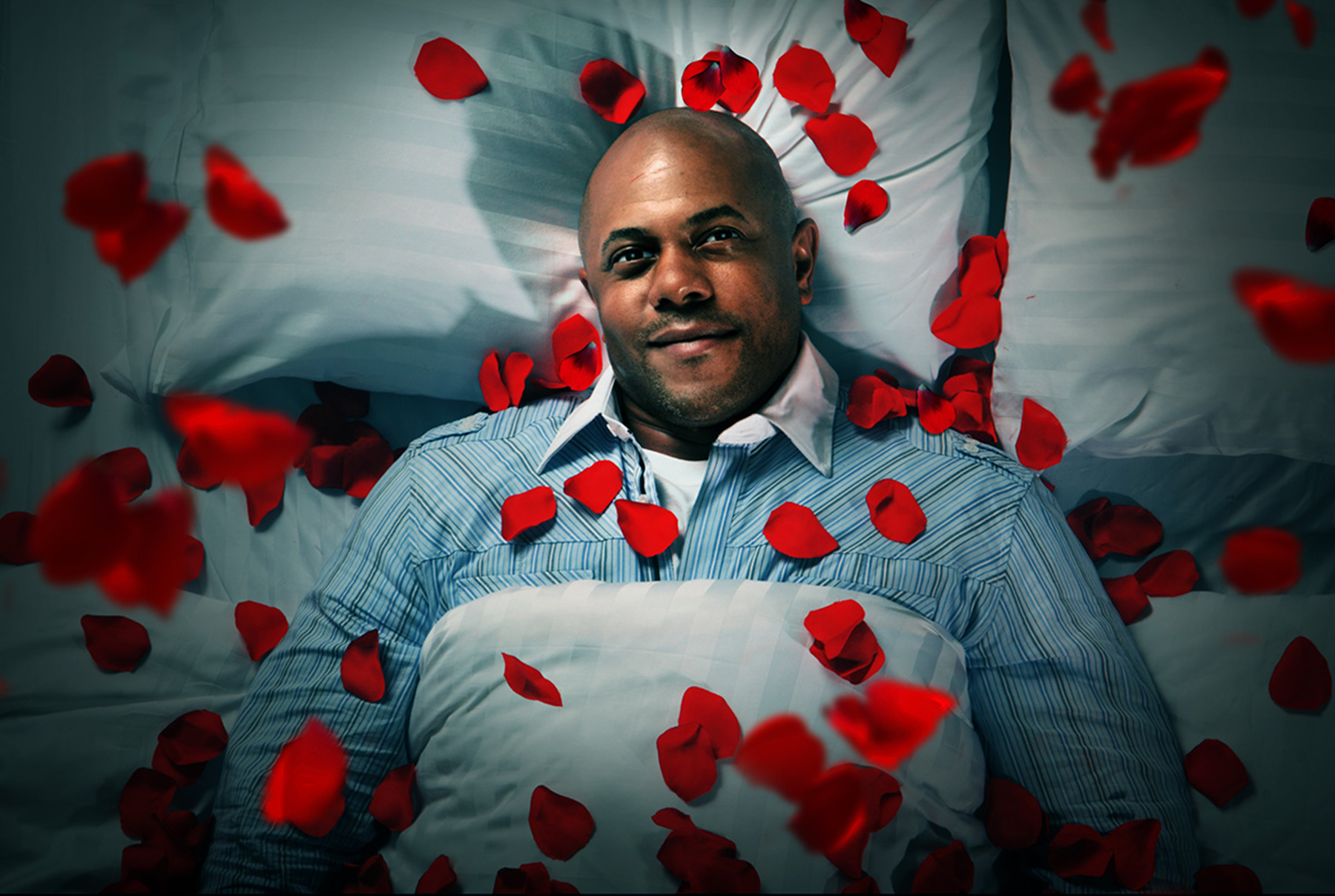
THE PHOTOGRAPHS & THE INTERVIEW:
There are many stunning stand-alone photos, for instance of Vivica Fox as Veronica Lake, Toni Truck as Marlene Dietrich, and the Hodge Brothers – Aldis and Edwin – to name just a few. I could spend the entire interview focusing on the beautiful images in this book, but there is also an important conversation that your book provokes. How did you settle on which image to reimagine?
Most of the pairings with subject and film were organic. Breakfast at Tiffany’s – Amber Stevens West has only two photos in her home. One is Audrey Hepburn. One is family. That was easy.
Let me name a photo and you tell me your thoughts: Vanessa Williams as Cleopatra:
I always wanted to shoot Vanessa Williams as Cleopatra because she holds a special place for many people regardless of color. She rose above circumstances and became this marvel of an actress, singer, dancer, stage, and television; she is quintessential and I had to give her something that met the moment for her.
But seeing Cleopatra as a woman of color is appropriate since she is representative of Africa.
Carell laughs delightedly at my comment. “The story of Vanessa as an individual and the story of Cleopatra, for me it’s subliminal.”
Stu James as The Green Lantern: I understand the importance of Black Panther, but talk about making The Green Lantern, Black.
Before Black Panther it was a rarity that we saw Black superheroes. I wanted to include Black LGBTQ+ people for the book also, because I wanted people searching to know that that too is normal. I wanted to entertain people, but wanted to give Black children a hero they could see themselves so they would grab their mother’s shirt and tie it around their head and act out the fantasy with a hero that looked like them. My friends and I wanted to be Superman, Thor, but it felt like we were on the outside looking in. Black Panther showed we can be more, and it can be successful.
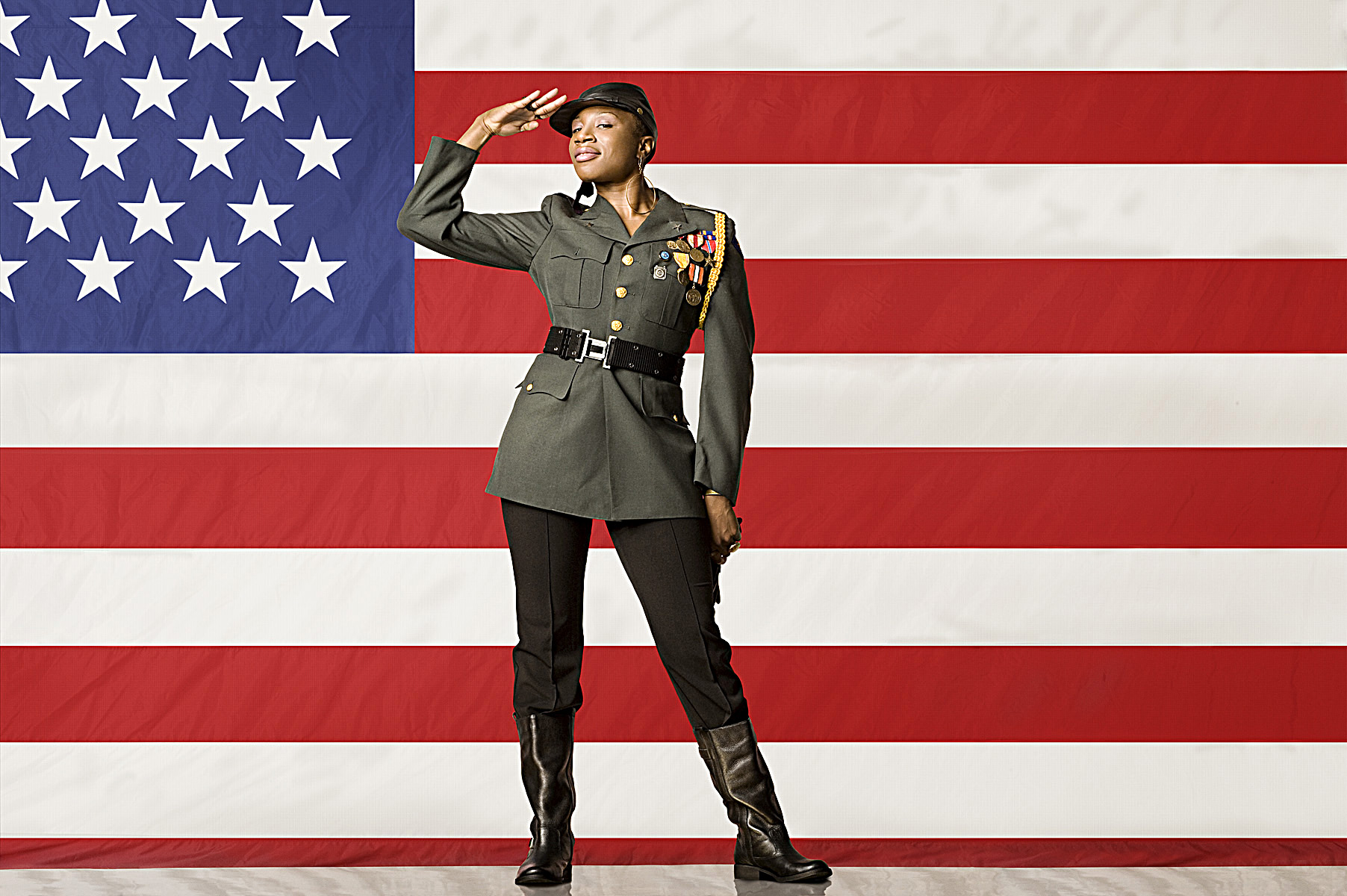
Aisha Hinds as Patton: This photo didn’t initially stop me. I thought, “Great shot.” Then I read the sidebar and… wow! It’s a Black woman, representing the Armed Forces – and America – with your words in the sidebar: “As a veteran (myself) it’s what I fought for: Your rights, the rights of all Americans, no matter their skin color.” It never occurred to me that that wasn’t the case.
What I love about the flag is what it is supposed to represent. I don’t think it’s smart to disrespect the flag or America. I don’t think kneeling for the flag is disrespectful. True patriots will always fight for what the flag is really supposed to stand for: freedom, liberty and justice for all. For 13 years I stood with my hand on my heart at school making me believe that that is what it was about. If you indoctrinated that into my thinking, what’s wrong with making that come to pass? It’s a Black woman General, standing in front of the flag, representing freedom for all of us.
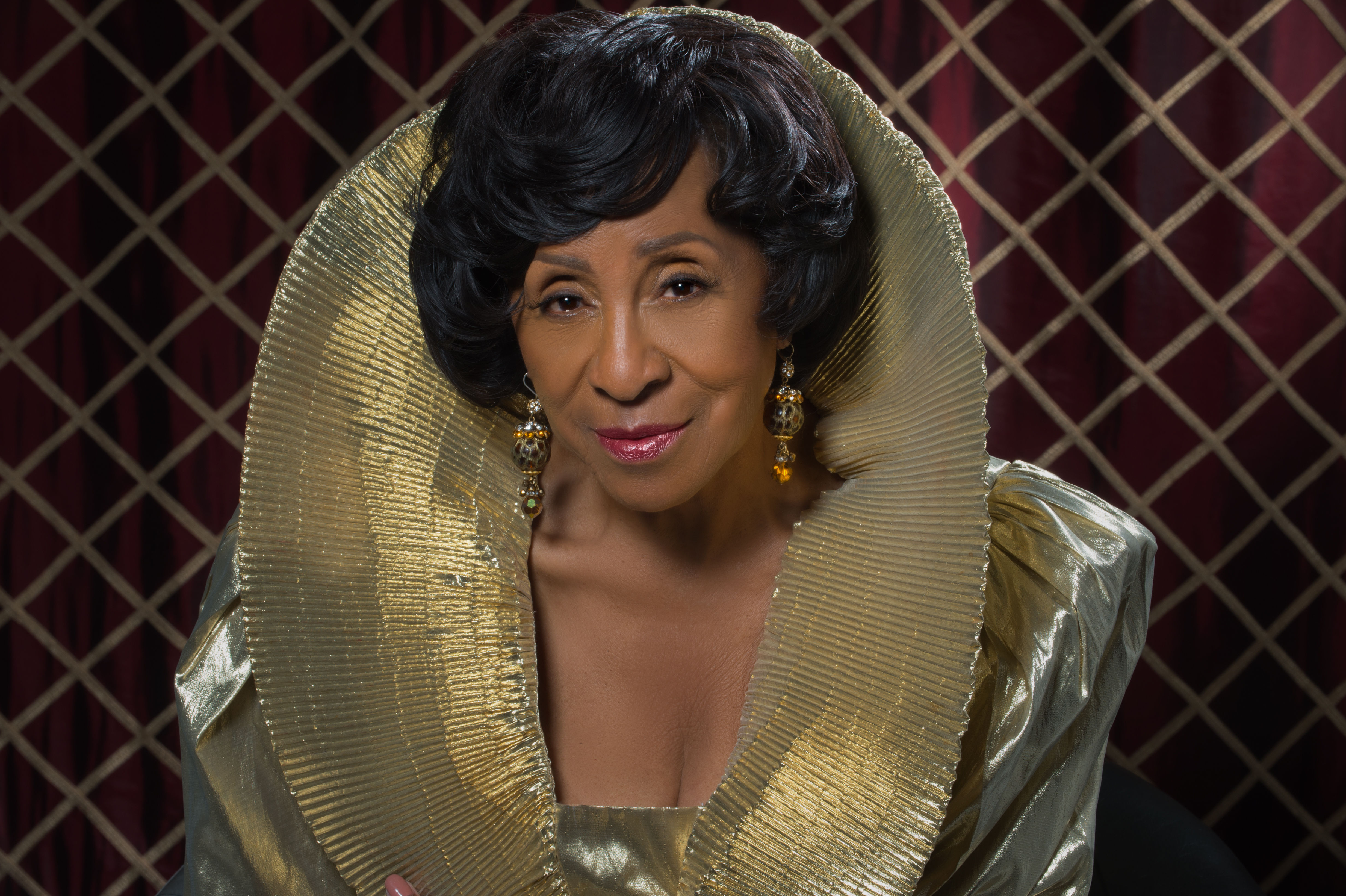
Marla Gibbs from The Jeffersons: Ms. Gibbs is a five time Emmy award nominee and the photos are just so glam. I went: “What is the message?” Then I went: “There isn’t one. She’s in her 90s and this is merely a celebration of a woman because she is amazing….”
You get it. She is amazing. She should be revered and celebrated for her accomplishments. She is still working. She is a legend. I grew up watching The Jeffersons and watching her steal the scenes. I wanted Marla Gibbs in my book more than I could ever express to you. It adds to the status of what the book can and will be.
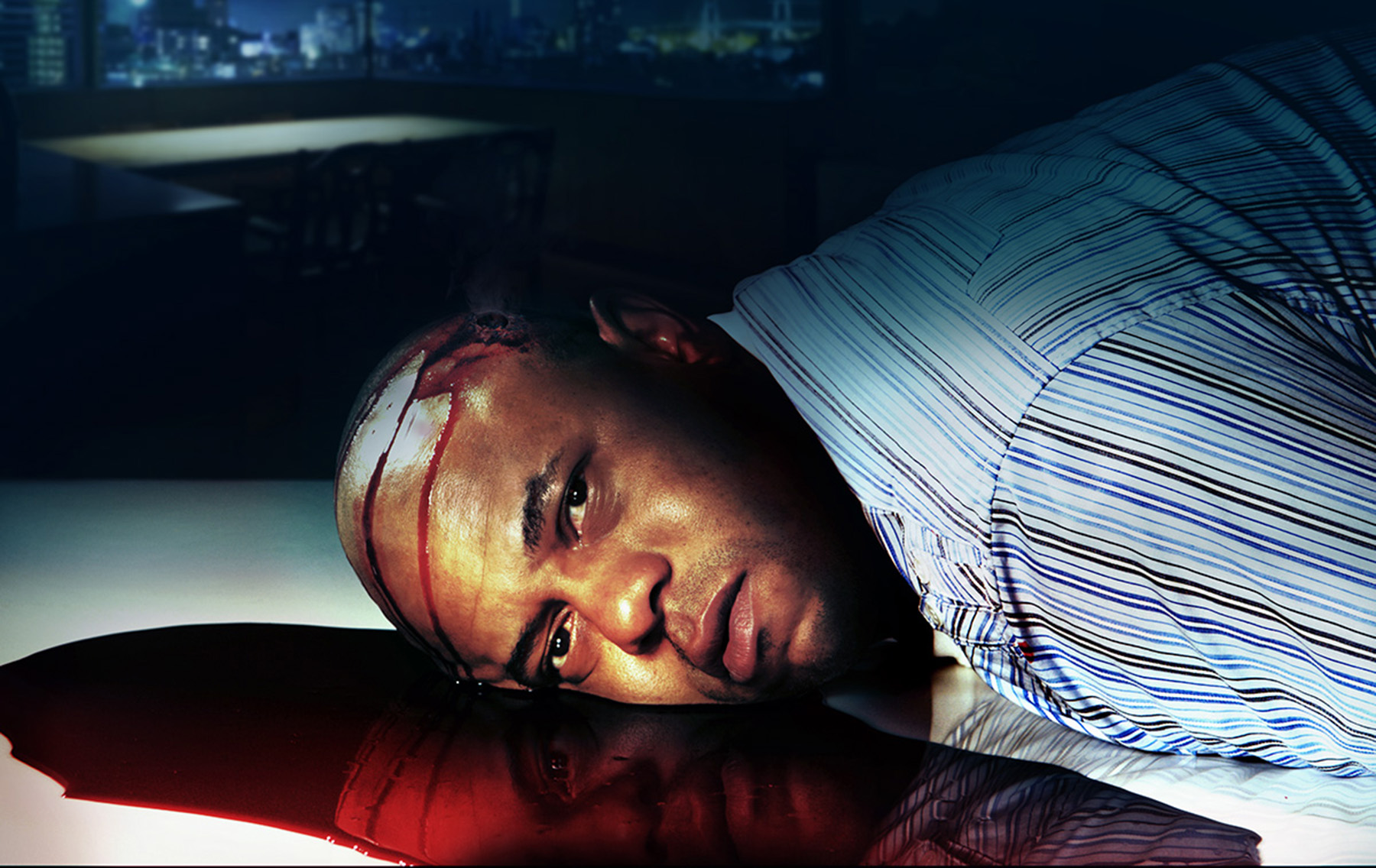
Rockmond Dunbar in American Beauty: A Black man lying in a pool of blood.
I was reluctant to put a gun in a Black man’s hands in any shot in this book. I think Tamir Rice, I think about Trayvon Martin – people who were just existing and not causing a problem at 12, at 17 – and now they are dead. Did you notice his eyes are open? I intended people to look at the picture and consider the context of what is happening in the world.
For the last five days I can tell you exactly what I have done. I keep all my receipts. I recognize people on sidewalks in case I have to prove that I’m not the suspect who broke into the liquor store last night. The book is art, but also context of what’s happening around us. For a moment I was reluctant, but Rockmond Dunbar was willing to go there and I thought: “Let’s just go there.” It was a real uncomfortable picture to shoot. We had to pour the blood. It was scary to create a bullet wound in a Black man’s head but unfortunately that is happening.
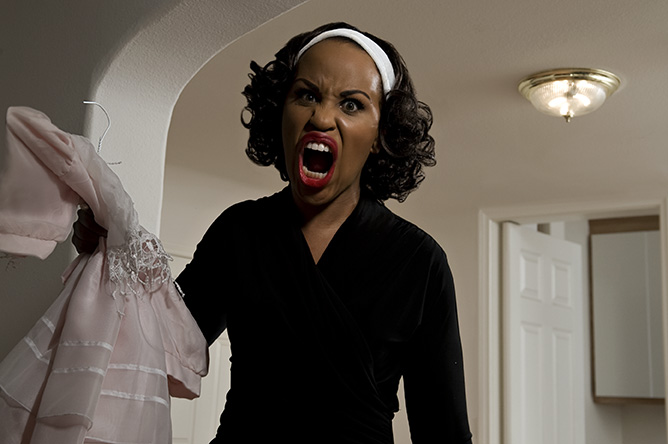
Kellee Stewart in Mommie Dearest: As a woman I’ve not seen myself represented in positions of power. I’ve been raised to be nice and not shake the status quo – so to see a Black woman, deliberately depicted as someone not nice? Part of freedom is to be depicted in all our ranges not just as the perfect version. There is that, but there’s the flip side: that there are awful people. What was your message?
I love Kellee Stewart. When I told her I wanted to shoot her as Mommy Dearest she said, “Perfect, because I’m frustrated.” I chose Joan Crawford, who wasn’t nice, and for a long time she controlled her image. Kellee Stewart said, “I’m there, I want to express this.” You see her frustrated and angry. It could be about her being mad that her dress is not on the hanger – or it could be about what her plight had been in society; and that’s why it created such a great picture.

Adina Porter as Barbra Streisand:
Adina has one of the most unique faces in Hollywood. I think she is stunning with a really interesting profile. I wanted Adina to be seen like Streisand, for the uniqueness of her profile.
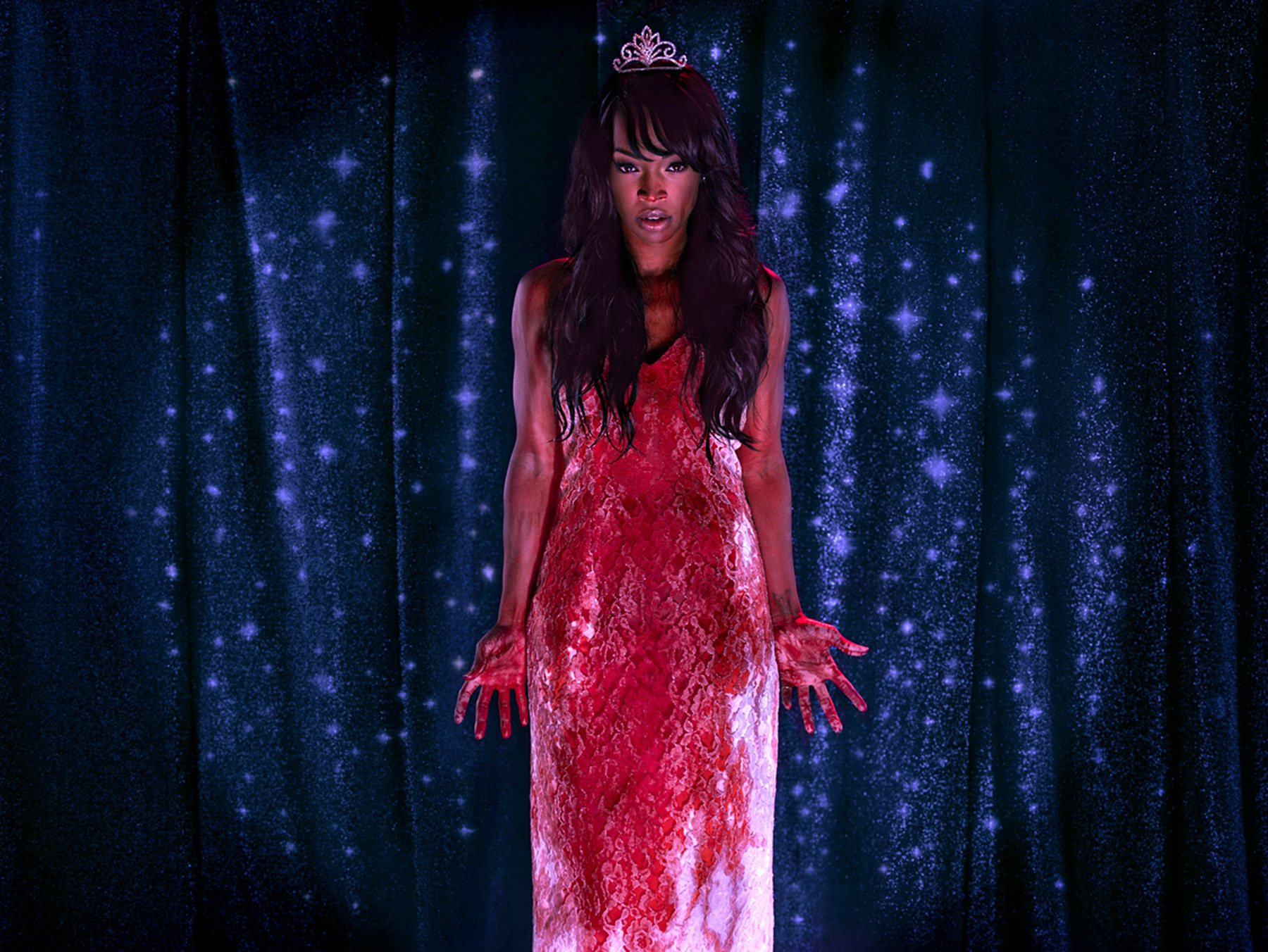
Just a biographical note. Your book covers so many issues: gender, power, stereotypes, but I’m curious for a creative person to have gone into the Army – why?
I graduated high school in 1993. For about two or three years before that I was on the year book at my school. It was the first time I saw my name in print: Photo by Carell Augustus.
I applied to the Savannah College of Art and Design, but I hadn’t heard back and didn’t have money. I wanted to experience the world, so I joined the Army. I wasn’t the toughest guy in the world but I knew I could do it. I was stationed in Germany for three years and travelled to Paris, Rome, Luxembourg and Amsterdam, which gave me a different sense of art and photography: going to the Louvre and the Vatican saved me by being exposed to things I wouldn’t have (otherwise) encountered. It fed my creativity, which led to me ultimately attending the Brooks Institute in Santa Barbara.